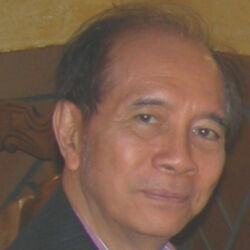C2.3 11th PAOLO SANTINI MEMORIAL LECTURE: Structural Integrity of Space Vehicles and Structures Subject to Motion, Thermo-Structural Dynamics and Environmental Effects
Symposium: C2. IAF MATERIALS AND STRUCTURES SYMPOSIUM
Session: 3. Space Structures - Dynamics and Microdynamics
Day: Tuesday 03.10.2023
Time: 15:00
Room: BCC A1

Harijono DJOJODIHARDJO
Professor, Bandung Institute of Technology
Indonesia
Since the first object in space was launched in 1957, a great achievement and progress has been made to date with vision for future, further exploration and taking advantage of the Universe, for human benefits and sustainability, gaining scientific knowledge and developing engineering structures to that end. The series of celebrated and grand accomplishments as well as unfortunate failures will make people more intelligent, quixotic, imaginative, creative and realistic. Remarkable achievements as cases in point are most modern Earth and Universe observation spacecraft to date which are now equipped with large lightweight and flexible structures, such as antennas, telescopes, and extendable elements, including the incorporation of more complex and larger appendages with high precision for scientific applications, making the requirements for more stringent structural integrity requirement of large space structure to minimize performance degradation due to structural damages. In addition, considerable effort is being directed to reducing aerospace structures weight and their associated manufacturing costs, selection of the most appropriate materials employed, to reduce assembly costs and to reduce weight through fewer parts, or to produce one-piece more complex configuration parts. Various sensor actuator and control technology could be employed to reduce structural damage. Associated with these, deep learning framework and sensors configuration may be required to accurately detect failures in the most critical areas of the structure and strategies for their deployment. To that end, the objective of the present paper is to focus at:
- Collecting an inventory of concepts, design, methods, engineering and operation to maintain structural integrity and associated means for implementation.
- Reviewing already implemented concepts and programs selectively with the view of recognizing the successes and failures of these technology advances and identify some efforts for improvements, which may be offered as solution possibilities.
- Reviewing a selected aspects out of the multitude of prevailing issues relevant to structural integrity, such as the methods and technologies that account for the concept, design and engineering for constructing a tool, a space vehicle or structure, to meet a multitude of objectives under a multitude of requirements and constraints.

